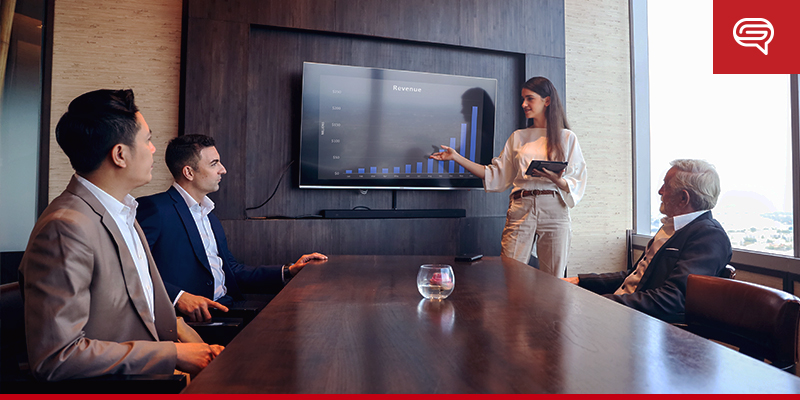
When delivering a presentation, timing is more than just keeping track of minutes on a clock.
Timing is an art that can greatly impact the effectiveness of your message and your audience’s engagement. The right timing can captivate your audience, reinforce key points, and leave a lasting impression. However, poor timing can result in disinterested listeners, missed opportunities, and a lackluster presentation.
Need a Presentation Designed?
Click Here To View Our Amazing Portfolio
The Science of Timing
Timing is not just an abstract concept but has real psychological and physiological impacts on the presenter and the audience. Understanding the science behind timing can help presenters make informed decisions on structuring their presentations for maximum impact.
Psychological Impact
Timing plays a significant role in audience engagement and retention.
Studies have shown that attention spans are limited, and listeners tend to lose interest if a presentation drags on or feels rushed. Moreover, your presentation’s timing can affect your audience’s cognitive load—the amount of mental effort required to process information.
Too long or fast-paced presentations can overwhelm the audience and reduce their ability to retain and comprehend the information.
Physiological Impact
Timing can also impact the physiological responses of both the presenter and the audience.
When a presenter is rushed or anxious due to poor timing, it can affect their vocal tone, body language, and overall delivery. On the other hand, a well-timed presentation can create a sense of rhythm and flow, enhancing the speaker’s confidence and stage presence.
Similarly, the audience’s physiological response, such as their heart rate, can be influenced by the timing of the presentation, affecting their level of engagement and emotional connection with the content.
Optimal Presentation Lengths
Research suggests that the ideal presentation length may vary depending on the context and audience.
TED talks, known for their engaging and impactful presentations, are typically limited to 18 minutes or less since shorter presentations align better with the limited attention spans of today’s audiences. However, longer presentations may be appropriate in specific settings, such as academic lectures or training sessions.
Understanding the optimal presentation length for your audience and context can help you plan your timing accordingly.

Attention Spans
Attention spans vary depending on factors such as age, context, and level of interest.
On average, studies have shown that the attention span of adults ranges from 10 to 20 minutes, while children’s attention span is even shorter. This highlights the importance of structuring your presentation with engaging content and well-timed transitions to maintain audience attention throughout your presentation.
Techniques for Timing Your Presentation Effectively
Timing your presentation requires more than being aware of the factors that can impact your pacing; it also involves utilizing specific techniques to ensure your delivery is smooth, engaging, and impactful. Here are some techniques to help you time your presentation effectively:
Rehearse, Rehearse, Rehearse
Practice makes perfect when it comes to timing your presentation. Rehearsing your presentation multiple times can help you get familiar with your content, delivery style, and timing.
Time yourself during rehearsals to ensure you stay within your allotted time, and make adjustments as needed. Practicing also helps you build confidence, which can positively impact your delivery and timing during the actual presentation.
Use a Timer or Stopwatch
Utilize a timer or stopwatch during rehearsals and the actual presentation to track of your time. Set specific time limits for each section or slide of your presentation and stick to them to help you stay on track and avoid running over time.
Pace Yourself
Pay attention to your speaking rate and pace yourself accordingly.
Avoid speaking too quickly or too slowly, as both can affect the timing and comprehension of your presentation. Vary your speaking speed to add emphasis, create pauses, and engage your audience.
Use Visual Cues
Use visual cues, such as notes or slides, to guide your timing during your presentation.
Highlight key points, transitions, or cues for audience engagement to ensure you stay on track with your timing. However, be mindful not to rely too heavily on visual cues, as they may affect your connection with the audience.
Be Mindful of Time Signals
Keep an eye on any time signals provided by organizers or moderators during your presentation.
Time signals may include visual cues, such as time cards or hand signals, to indicate how much time you have left. Be attentive to these signals and adjust your pacing accordingly.
Practice Flexibility
Be prepared to adjust your timing on the spot if needed.
Unexpected situations may arise during your presentation that can affect your timing, such as technical issues, audience questions, or interruptions. Therefore, practice flexibility by having contingency plans, such as shortening or omitting certain content, to adapt to unexpected situations while maintaining effective timing.

Seek Feedback
Request feedback from a trusted colleague, mentor, or friend who can provide constructive feedback on your timing. They could identify areas where you can improve your pacing and suggest adjustments.
Need a Presentation Designed?
Click Here To View Our Amazing Portfolio
Mastering the art of timing is essential for delivering a presentation that captivates and resonates with your audience. Follow these strategies to ensure your presentation is well-timed for maximum impact, leading to a successful and memorable presentation experience.





